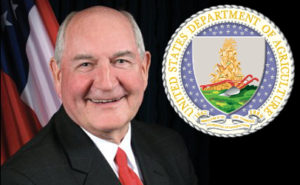
U.S. Agriculture Secretary Sonny Perdue today announced the re-enrollment deadline for the Margin Protection Program (MPP) for Dairy will be extended until June 22, 2018.
The new and improved program protects participating dairy producers when the margin – the difference between the price of milk and feed costs – falls below levels of protection selected by the applicant. USDA has already issued more than $89 million for margins triggered in February, March, and April, and USDA offices are continuing to process remaining payments daily.
“Last week we re-opened enrollment to offer producers preoccupied with field work an additional opportunity to come into their local office to sign-up. We did get more than 500 new operations enrolled but want to continue to provide an opportunity for folks to participate before the next margin is announced,” said Secretary Perdue. “More than 21,000 American dairies have gone into our 2,200 FSA offices to sign-up for 2018 MPP coverage but I am certain we can do better with this extra week and a half.”
The re-enrollment deadline was previously extended through June 8, 2018. The deadline is being extended a second time to ensure that dairy producers are given every opportunity to make a calculated decision and enroll in the program if they choose. This will be the last opportunity for producers to take advantage of key adjustments Congress made to provisions of the MPP program under the Bipartisan Budget Act of 2018 to strengthen its support of dairy producers.
USDA encourages producers contemplating enrollment to use the online web resource at www.fsa.usda.gov/mpptool to calculate the best levels of coverage for their dairy operation.

The next margin under MPP, for May 2018, will be published on June 28, 2018. Therefore, all coverage elections on form CCC-782 and the $100 administrative fee, unless exempt, must be submitted to the County FSA Office no later than June 22, 2018. No registers will be utilized, so producers are encouraged to have their enrollment for 2018 completed by COB June 22, 2018.
All dairy operations must make new coverage elections for 2018 during the re-enrollment period, even if the operation was enrolled during the previous 2018 signup. Coverage elections made for 2018 will be retroactive to January 1, 2018. MPP payments will be sequestered at a rate of 6.6 percent.
To learn more about the Margin Protection Program for dairy, contact your local USDA Farm Service Agency county office at offices.usda.gov or visit us on the Web at www.fsa.usda.gov.






